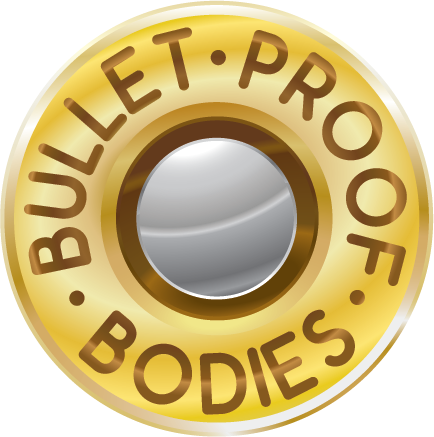Stretching?
You’re Doing it Wrong!
Here’s Why
You’re Doing it Wrong!
Here’s Why
“Make sure you get a good stretch before you run!”
“Alright guys, before we get on the courts for practice, let’s make sure we stretch”
“Stretching is going to help make sure you don’t get hurt on the field”
These are the lessons that most of us carried from an early age whether it was in youth sports, or our elementary school PE classes. The critical importance of 15 minutes of stretching before engaging in athletic activities. That we needed to sit and hold the stretch, avoid bouncing, and take long sustained breaths. No matter what activity you were doing, stretching was a must whether it was lifting heavy weights, sprinting, or going for a leisurely jog.
And if you ever got injured, what was usually the main culprit?
Pulled a hamstring?
Hurt your shoulder?
Got cramps?
Usually your coaches and naysayers will tell you that you just didn’t stretch enough.
But what if we were all wrong about stretching. Not only how it’s done, but when it’s done. A lot of research in Sports Medicine seems to be saying that this may be the case. Several well designed studies show that Pre-exercise static stretching was ineffective in prevention of injury, and in some sports actually decreased muscular performance.
Does this mean I should stop stretching?
Now don’t get me wrong. Stretching is an important piece of flexibility which is important to joint mobility and range of motion. The important thing to take away from this is that HOW you stretch and WHEN you stretch are incredibly important to the activity you’re about to take on.
Here are some facts based on research:
1. Static stretching right before physical activity is shown to reduce explosive muscle activity in both squat testing and sprinting in athletes.
2. Stretching before physical activity does not have much impact on overall injury rates compared to those who don’t stretch.
3. Flexibility does have overall benefit on tissue compliance, meaning that stretching does allow for muscle tissues to be more resistant to injury.
4. It matters which activity you’re prepping for! If you’re a gymnast, figure skater, or dancer then stretching is of utmost importance. However,if you’re preparing to make your muscles fire as hard and as tight as possible (sprinting, weight lifting) then stretching is likely setting you up for failure.
So what now?
Obviously we don’t want to go into a sport or exercise unprepared. As humans, we are ill prepared to tackle the stresses of sport when our lives consist of sitting for 6- 8 hours per day developing inactive sticky muscle tissue. Kelly Starrett speaks to the concept of being a Supple Leopard, and how animals in the wild don’t need to stretch to go from 0 to 100% effort to live it’s life. Perhaps back in the days of our early ancestors where movement was a part of living, What should we be doing instead? Here’s what I recommend:
1. Dynamic Warm up – Your body should be prepared to take on the activity you’re about to perform. It’s important to get your heart rate elevated, circulation flowing to the muscular system, and your muscle tissues prepared for the movements that are coming. Things like jumping jacks, a light jog, rowing, or stationary bike can help elevate the heart rate. Body weight squats, push ups, and lunges are great ways to prepare the body to move weights. Also joint mobility movements like heel to toe rocking, arm circles, and knee circles can help stimulate proprioceptive nerves in the joint to fire properly into the brain.
The biggest key here is this: Does your warm up a mild/moderate form of what you’re about to take on?
2. Cool Down – Stretching is a great modality when used properly. When we stretch a couple of things happen. It reduces muscular pain, increases range of motion, and allows for greater tissue compliance when done consistently over time.
What it does immediately is activate the parasympathetic nervous system, or the part of the nervous system that is responsible for slowing things down and relaxing.
This may be one of the best arguments against stretching before ballistic activities and weight lifting. If you stretch, you are priming your body to slow down, which is perfect for a cool down activity.
In fact, stretching may be a great way to prepare your body for resting periods like sleep. Instead of just rotting in front of a TV, I encourage my patients to take that time to get stretches in before bed, which may help them fall asleep easier.
3. Add Dynamic Stretching Into Your Routine – Everyone knows what a static stretch looks like. The reach down and touch your toes, and just hold it there for 10 seconds.
In the past 20 years, trainers and physical therapists have come up with dynamic stretching protocols to make stretching more effective and reflect the demands of movement. Proprioceptive neuromuscular facilitation (Contract and Relax) and banded assist routines can drastically improve your results. However, these things should be done with some supervision from a trainer or therapist in the beginning so that you can find the right way to work for you.
Remember, we’re not her just to do things for the sake of doing them. Let’s take a moment and make the most of our exercise and maximize your results.
Dr. Chung is a practicing Structural Chiropractor in the West Palm Beach area. He has been published in peer reviewed scientific journals and is a sought after speaker in health and wellness. Follow his blog at http://chiropractorwellington.com/category/keystone-chiropractic-blog/ or find him on twitter at @drjonathanchung
Article Source: https://EzineArticles.com/expert/Dr._Jonathan_Chung/1630453
Article Source: http://EzineArticles.com/8619963
Video: https://www.youtube.com/channel/UC4BvkJe2U4CnenW61nm_HOQ

